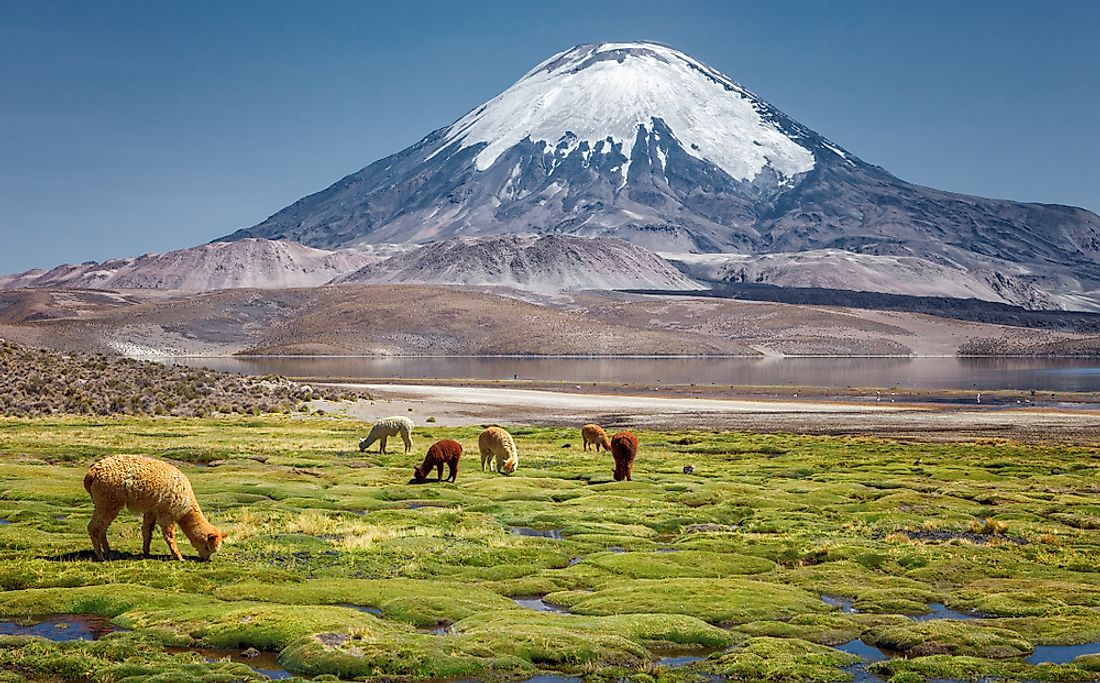Where Do Alpacas Live?

Though alpacas were natively found across South America, they originated in Peru. They are found along the foot of various mountains and high plateaus such as the Andean ranges in Bolivia and the foothill of the Cordillera Occidental and Cordillera Oriental. A smaller population lives in Altiplano and along the river Desaguadero basin. With time, they spread to the South American regions of Argentina, Chile and Ecuador. In the wild, alpacas live in regions of an elevation that ranges from 9,840 to 15,750 feet above sea level. Currently, there are over 350,000 alpacas in the world with the largest herd being in Peru, Argentina, Bolivia, Ecuador, and Chile. A few alpacas are found in Salar de Uyuni near the hydrographic region of Lake Titicaca.
Description of Alpacas
Alpacas are ruminants which are classified as members of Camelid family. The family is made up of the guanaco, Ilama, vicuna, and camel. Adult alpacas are about 3 feet tall with an elongated neck and a small head. Their feet have two toes in the front and have soft pads, a feature that makes it easy for them to graze comfortably with little impact on the ground. The animals are very gentle but very inquisitive, a character assisted by the elongated neck. There are two breeds of alpacas, the Huacayas and the Suri.
Huacayas Alpacas
Huacayas are the more common breed of alpaca. They have fluffy, crimpy hair that looks like that of a teddy bear. The species is believed to have lived in the wild in post-colonial Peru thousands of years ago. Their adaptation is enhanced by their thicker covering of fleece to enable them survive in higher attitudes of Andes. Their bulky, rounded appearance makes them preserve energy to survive in the cold habitat.
Suri Alpacas
This breed forms the minority in the population. Their wild native habitat was in the pre- Columbian region of Peru. Their wild adaptation was mainly in lower attitude since they did not require a very thick fleece. The Suri breed is identified by lustrous wavy hair that is long hence locks hang loose towards the ground.
Domestication of Alpacas
Alpacas were initially domesticated by local Indians near the Andes Mountains. Due to the value of the fleece that covers their bodies, they were imported to various states in the US, Australia, and in the United Kingdom. Currently, alpacas are found across the globe where they are reared for their long lustrous fur or kept as pets. Their fleece comes in 22 colors hence cloth making factories find them very prestigious. Peru is the leading processor and importer of Alpaca fibre.
Population and Conservation
The number of alpacas decreased drastically during the Spanish invasion around 1532 due to the destruction of their natural habitat around the Andes mountain. The outcome was migration of the few remaining alpacas up the mountain where they adapted very quickly. They easily adapt to climatic condition where temperatures alter rapidly. Alpacas survive best in high altitude regions which are wet and humid like the ones found in the northern and western side of Altiplano. Since they are herbivores, they adapt to places where green matter grows. Their digestive system is divided into three compartments with each stomach playing a vital role in converting food into energy. The ability makes them adapt to mountainous conditions where tender grass thrives. However, the Alpacas are an endangered species hence conservation of their natural habitat is a priority.











